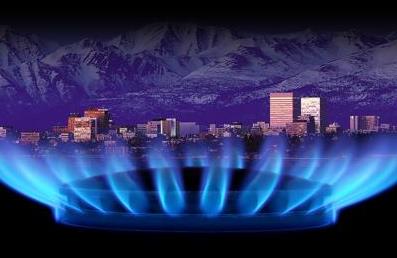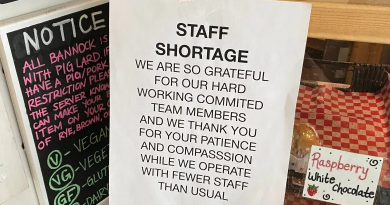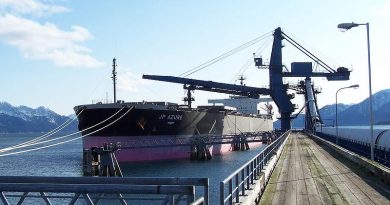Opening of huge Russian field drives another nail into Alaska’s gas coffin
 In the Russian Arctic, state-owned oil giant Gazprom is doing what Alaskans have long dreamed of — tapping vast reserves of natural gas at the top of the planet and shipping them to markets.
In the Russian Arctic, state-owned oil giant Gazprom is doing what Alaskans have long dreamed of — tapping vast reserves of natural gas at the top of the planet and shipping them to markets.
Although natural gas has been flowing from the Yamal Peninsula’s Bovanenkovo gas field since June, this past week Gazprom hosted a big event to celebrate the official launch of its field and the workers there.
Bovanenkovo, one of the world’s three largest conventional natural gas fields, holds an estimated 177 trillion cubic feet of gas. Its official opening featured a giant video monitor that beamed in an address from Russia President Vladimir Putin. The Wall Street Journal described the event like this:
Putin praised Gazprom’s successful launch of the new gas field, expected to produce for the next 28 years. He then suddenly slammed the gas monopoly for not adjusting its policy to what he saw as the risk of growing production of shale gas around the world.
The video conference was held in sub-zero temperatures, with the organizers keeping the crowd warm with live pop music and Russian folk songs, including a few about the Yamal region and Gazprom.
“Oh the northern land which is called Yamal! It is the edge of geography and romance. Here the Earth’s heartbeat is faster and the love is as permanent as the frost,” one of them said.
The fact that Putin celebrated the Arctic gas field and also expressed concern about shale gas as a huge new field started up shows just how far behind Alaska’s leaders have been in understanding the state’s place in global oil and gas markets.
It wasn’t until a couple of years ago that state legislators even began to ask questions about the shale gas boom in the Lower 48. By then, however, the implications were clear: Alaska’s massive proven conventional natural gas reserves — the biggest in North America but still only about one-fifth of those at Bovanenkovo — would likely remain untapped for another generation or so as cheaper shale gas became the hot commodity of the day.
Still, Alaska Gov. Sean Parnell claims he’s working hard to get the three big oil companies that hold leases to the state’s gas reserves — Exxon Mobil Corp., ConocoPhillips and BP — to come up with a plan to transport the gas on a pipeline to Valdez or somewhere in Southcentral Alaska, then chill it and export the liquefied natural gas (LNG) to markets in Asia, which currently, and amid great global market uncertainty, offer a price premium compared to North American customers.
The companies have said that such an LNG project could cost upwards of $65 billion. And they’ve made clear that until the state can agree with them on oil and gas taxes, Alaska’s gas won’t do much more than generate electricity across the North Slope, pressurize elephant oil fields in decline and bolster asset columns.
Now with Bovanenkovo coming online in Russia’s Arctic, floating LNG production platforms starting to be employed offshore in the Asia-Pacific region, and continuing plans in the Lower 48 and Canada to ship shale gas via LNG tankers to foreign markets, one has to wonder if Alaska’s gas reserves will get to any market anytime soon.
Contact Tony Hopfinger at tony@alaskadispatch.com and Scott Woodham at swoodham(at)alaskadispatch.com
For more stories from Alaska Dispatch, click here



